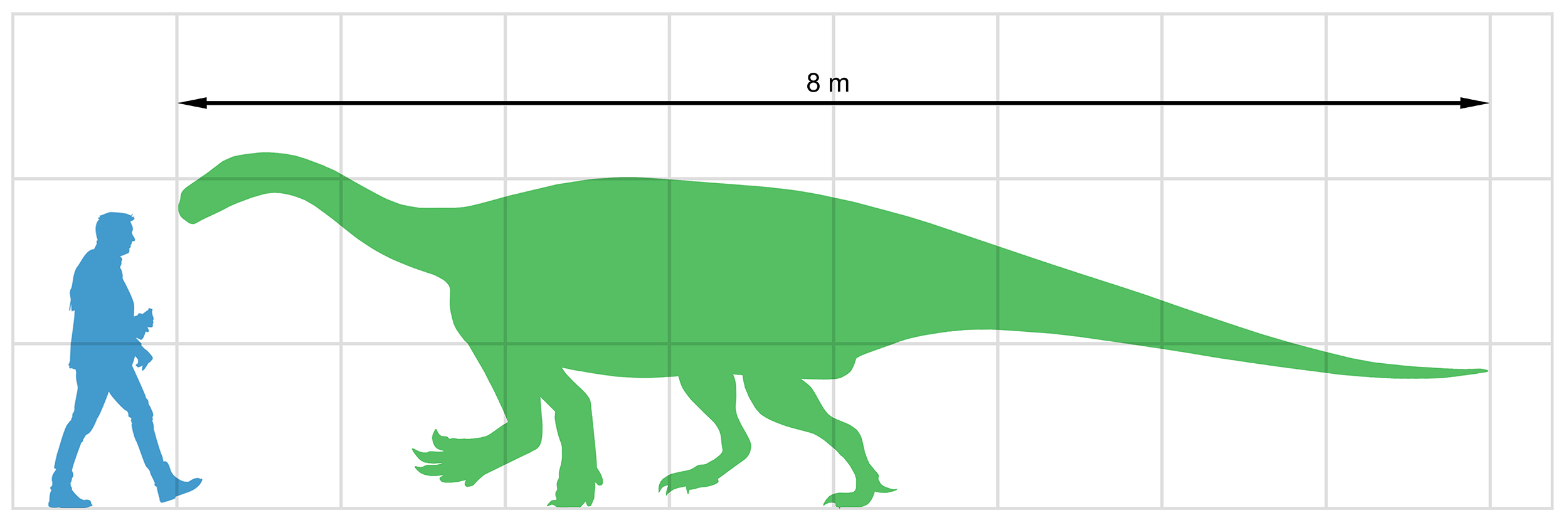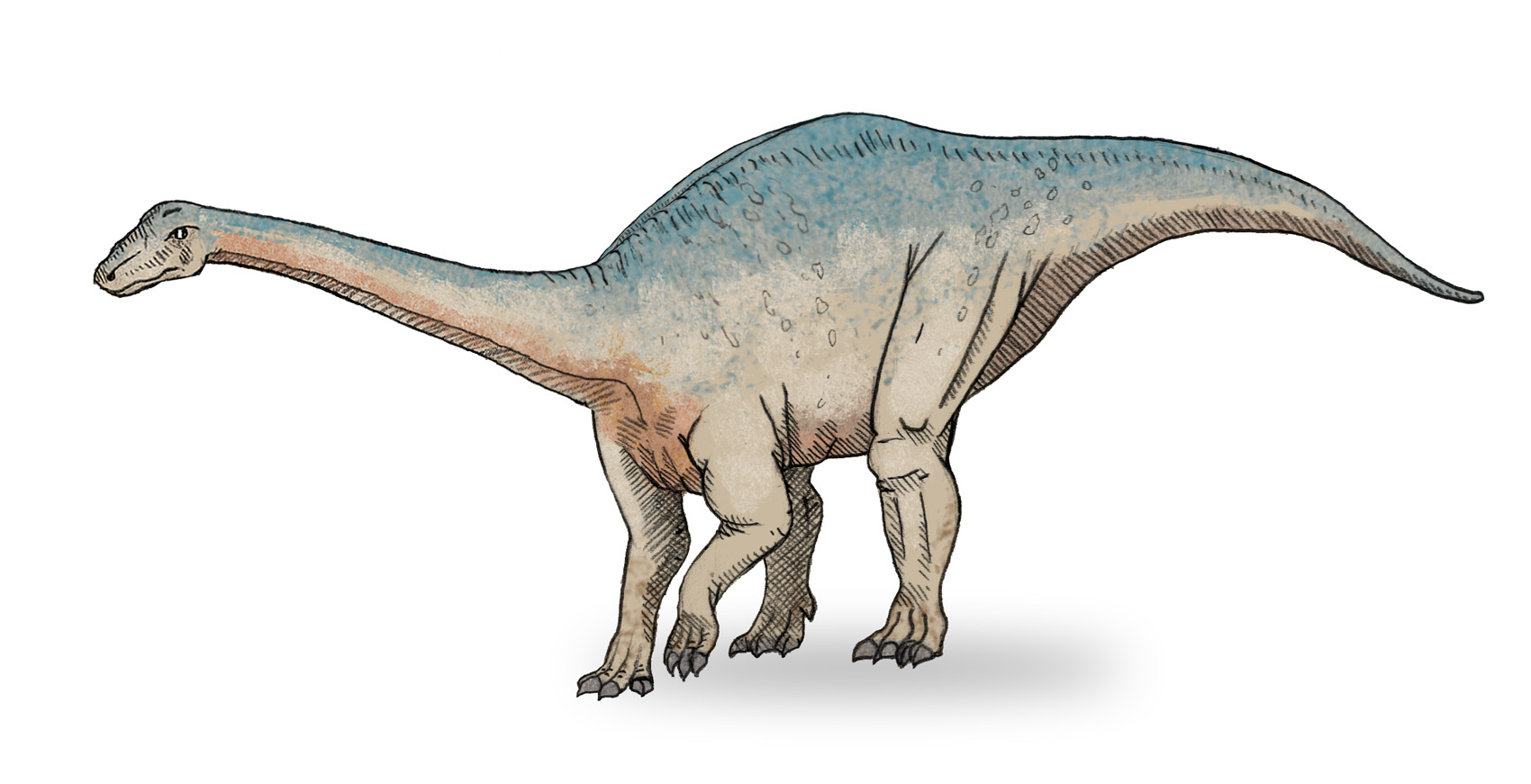|
Gongxianosaurus
''Gongxianosaurus'' is a genus of basal sauropod dinosaur from the early Jurassic Period (Toarcian stage). The only species is ''Gongxianosaurus shibeiensis''. Based on four fragmentary to complete specimens found in China (Sichuan Province), it is one of the most completely known early sauropods. The skeleton is known in large part, missing both the hand and the majority of the skull. ''Gongxianosaurus'' was firstly named and described in a short note published in 1998; however, a comprehensive description has yet to be published. ''Gongxianosaurus shibeiensis'' was named for the place it was found, near the village Shibei in Gong County (珙县; Pinyin: Gǒng Xiàn). Description ''Gongxianosaurus'' may have reached in length. Like other sauropods, it moved quadrupedally (on four legs), as indicated by the elongated fore limbs that reached 70 to 75% of hind limb length. The pedal phalanges were short and robust, as typical for sauropods. The pedal phalangeal formula, count ... [...More Info...] [...Related Items...] OR: [Wikipedia] [Google] [Baidu] |
Lessemsaurus
''Lessemsaurus'' is an extinct genus of sauropod dinosaur belonging to Lessemsauridae. Naming and description The type species, ''L. sauropoides'', was formally described by José Fernando Bonaparte in 1999 in honor of Don Lessem, a writer of popular science books. It was found in the Los Colorados Formation of the Ischigualasto-Villa Unión Basin in La Rioja Province, Argentina.Weishampel, David B; ''et al.'', 2004. "Dinosaur distribution (Late Triassic, South America)." In: Weishampel, David B.; Dodson, Peter; and Osmólska, Halszka (eds.): The Dinosauria, 2nd, Berkeley: University of California Press. Pp. 527–528. . This dinosaur was around long and was discovered in strata dating to the Norian stage, around 210 million years ago. It is estimated to have reached in maximum body mass. Classification A cladogram after Pol, Garrido & Cerda, 2011, illustrates a possible placing of ''Lessemsaurus'' and ''Antetonitrus'' in Sauropodomorpha: In 2018, Apaldetti ''et al.'' r ... [...More Info...] [...Related Items...] OR: [Wikipedia] [Google] [Baidu] |
Antetonitrus
''Antetonitrus'' is a genus of sauropod dinosaur found in the Early Jurassic Elliot Formation of South Africa. The only species is ''Antetonitrus ingenipes''. As one of the oldest known sauropods, it is crucial for the understanding of the origin and early evolution of this group. It was a quadrupedal herbivore, like all of its later relatives, but shows primitive adaptations to use the forelimbs for grasping, instead of purely for weight support. Discovery and naming Adam Yates, an Australian expert on early sauropodomorphs, named ''Antetonitrus'' in a 2003 report co-authored by South African James Kitching. The name is derived from the Latin ''ante-'' ("before") and ''tonitrus'' ("thunder"), which refers to its existence, before other known sauropods, specifically ''Brontosaurus'' ("thunder lizard"). The one known species of ''Antetonitrus'' is called ''A. ingenipes'', from the Latin ''ingens'' ("massive") and ''pes'' ("foot"), because it shows the beginning of the developme ... [...More Info...] [...Related Items...] OR: [Wikipedia] [Google] [Baidu] |
Isanosaurus
''Isanosaurus'' means "North-eastern thailand lizard" was a sauropod dinosaur from Thailand. It was originally dated to approximately 210 million years ago during the Late Triassic (late Norian to Rhaetian stages), which would make it one of the oldest known sauropods. Its age was later considered uncertain, and may be as young as Late Jurassic. The only species is ''Isanosaurus attavipachi''. Though important for the understanding of sauropod origin and early evolution, ''Isanosaurus'' is poorly known. Exact relationships to other early sauropods remain unresolved. Description The only specimen includes a neck vertebra, a back vertebra and part of a second, six tail vertebra, two chevrons, fragmentary ribs, the right sternal plate, the right shoulder blade, and the left thigh bone (femur). This individual may have measured when alive; the thigh bone measures 76 centimetres in length. However, the vertebral neural arches have been found separated from the vertebr ... [...More Info...] [...Related Items...] OR: [Wikipedia] [Google] [Baidu] |
Yibinosaurus
This list of informally named dinosaurs is a listing of dinosaurs (excluding Aves; birds and their extinct relatives) that have never been given formally published scientific names. This list only includes names that were not properly published (" unavailable names") and have not since been published under a valid name (see list of dinosaur genera for valid names). The following types of names are present on this list: * '' Nomen nudum'', Latin for "naked name": A name that has appeared in print but has not yet been formally published by the standards of the International Commission on Zoological Nomenclature. ''Nomina nuda'' (the plural form) are invalid, and are therefore not italicized as a proper generic name would be. * '' Nomen manuscriptum'', Latin for "manuscript name": A name that appears in manuscript but was not formally published. A ''nomen manuscriptum'' is equivalent to a ''nomen nudum'' for everything except the method of publication, and description. * '' Nomen ... [...More Info...] [...Related Items...] OR: [Wikipedia] [Google] [Baidu] |



